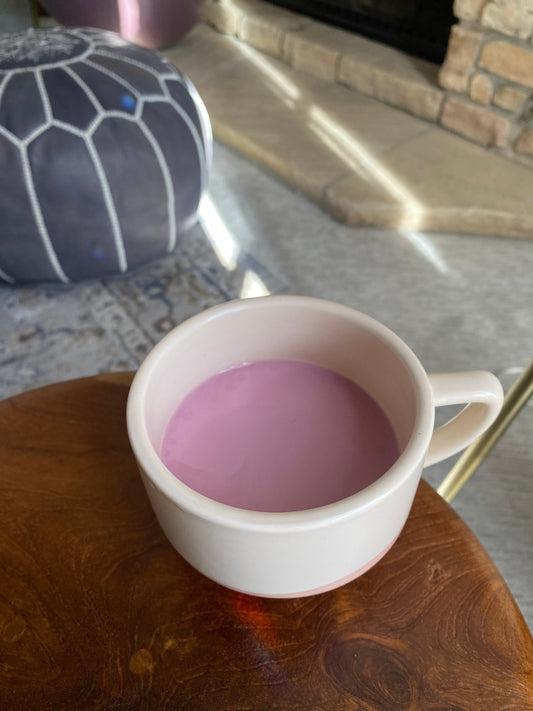
I believe that we all meditate, whether we are conscious of it or not. Whether it's simply taking a deep breath or reciting some positive affirmations to yourself quietly before starting the day, we are meditating so that we can re-focus and re-energize our efforts for whatever we are facing.
Most of us live a high-strung, 24/7 lifestyle and so many doctors are now recommending meditation as a treatment for the stresses, anxieties, and other ailments that come when we lose sight and are over-extended.
Perhaps you're curious about the practice and art of meditation and want to give it a try. Maybe the only thing keeping you from making this time of peace and reflection a daily ritual is simply not knowing how to get into the rhythm of relaxation. If so, this article is here to give you a simple step-by-step tutorial on how to guide yourself through a great meditation session.
Start your meditation time off at a brief 10 minute interlude during the day and gradually working to longer and more frequent periods of time as it compliments your needs and schedule.
Music? Silence? While there are some beautiful meditation playlists and CDs out there (and I fondly remembering listening to a fair share of meditation music during such sessions I used to do many years ago), it is actually recommended that you sit in silence. The reasoning behind this is that it allows you to remain conscious of what is going on in your mind and allows you to "listen" more closely to everything your mind and body is doing. This will help to build a closer relationship between your body, consciousness, and mind.
1. Maintain great posture. Whether you are sitting on the floor, in a chair, cross-legged, on the bed, or standing on a rocky cliffside, posture is everything. It's about centering your body, grounding it into the earth. Maintaining a straight line and great posture also opens up airways to help you breathe as deeply and fully as possible. Keep your spine upright and your head up. A great way to align your back is to sit cross legged and bend your body down towards your knees and then slowly roll back into an upright position, envisioning "stacking" one vertebra on top of the other. (At least, this is how my drama teacher used to help us maintain great posture for meditation and acting warm-ups and it really worked!)
2. Keep your gaze natural and--if possible--your eyes open. They say that keeping your eyes open during meditation allows you to be more present. Lower your eyes and keep your gaze relaxed. However, if closing your eyes helps you stay focused and feel more comfortable, do whichever works best for you. (This is what meditation is all about! It's a wonderful bit of me-time.)
3. Breathe, breathe, breathe. Breathing technique is absolutely essential to the art of meditation. Be conscious of your breath moving in and out of your body. Guided meditations often direct you to focus on your breathing in this way. Be sure to breathe deeply into your diaphragm, emptying it fully with every exhale but remember not to over-do it! Otherwise, you'll run the risk of hyperventilating and growing dizzy!
4. Don't encourage thoughts, but don't shut them out completely either (if they choose to visit during reflection time).Allow thoughts to progress naturally through your mind, but do try to stay focused on your breathing. If you find yourself wandering, try to return focus to your breathing in order to stay present. Oftentimes, it is difficult to truly clear one's mind so acknowledge any thoughts but then allow them to pass, returning to the breathing. Sometimes a guided meditation (either in-person or on a CD) helps to keep one focused.
5. Keep your emotions at bay. High-powered emotions like fear or anger tend to overthrow meditation time because it breeds scenarios and allows the mind to amble away from relaxation and re-centering. It can also trigger physiological responses (like quickening heart rate or a knot in the stomach) that can make meditation difficult and even impossible. Try to let go, set the feelings aside (even actually consciously schedule a time to allow yourself to experience those feelings) until after meditation time is over.
While you can meditate just about anywhere, it is fun and beneficial to create a safe and peaceful place in which to do your meditation. It allows you to focus especially on the task when you have a specialized place in which to meditate. You can surround yourself with things that soothe and feed you including candles, flowers, water, or stones. (We will be focusing on building a meditation spot in a future blog post so stay tuned!)
Meditation was one of my favorite daily traditions and I am so eager to take this tutorial as a refresher course and get back into it. I hope you'll join me on my path towards greater wellness, self-awareness, and overall health!
Posted by Erin Schwartz







